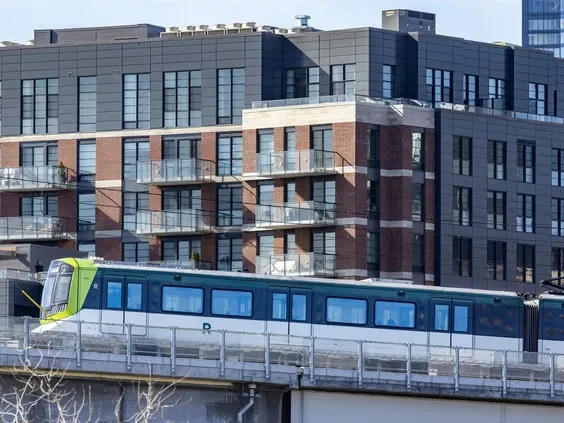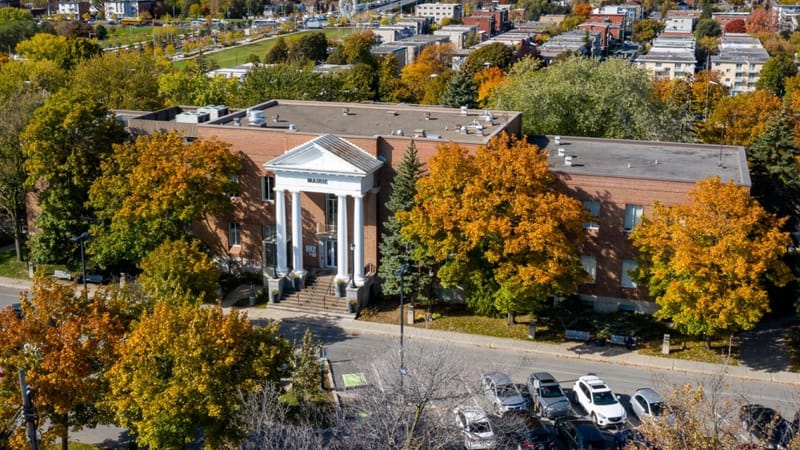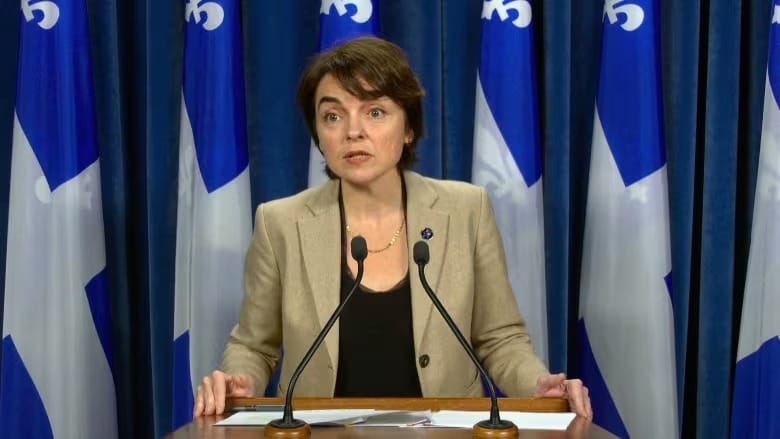Allison Hanes: Some commuters may be relieved about latest REM delay
Instead of getting more transit when the rest of the REM finally enters service, Montrealers could end up with less.

Passengers in Greater Montreal will have to wait an additional year before the remaining sections of the REM, the region’s major new light-rail network, are ready for use. Initially slated to launch in 2024, the service's start has now been postponed to 2025, though the exact date remains unclear. Last week, CDPQ Infra revised the timeline, stating the service would likely begin in the fall of 2025, which suggests the start may coincide with the arrival of the first snowflakes, rather than the vibrant colors of autumn.
While commuters eagerly anticipating the REM’s expanded service may feel frustrated, passengers on existing public transit routes, particularly those using Exo lines, might experience some relief.
However, the irony is that Montrealers may end up with fewer transit options once the REM’s new sections open. Transportation agencies are already facing financial uncertainty due to lingering pandemic effects, changing commuting habits, and an ongoing structural deficit. The Autorité régionale de transport métropolitain (ARTM) expects its operating shortfall to reach up to $500 million in 2025, with the provincial government agreeing to cover only part of the deficit.
As a result, transit agencies are in a difficult position. Exo has warned it might have to cut entire commuter train lines, including those servicing Candiac and Mont-St-Hilaire, and reduce service on the busy Vaudreuil-Hudson and St-Jérôme routes. Meanwhile, the Société de transport de Montréal (STM) has already scaled back bus frequency and may have to shorten metro hours unless it receives a more stable funding model. Efforts to streamline operations have led to the postponement of necessary maintenance, further affecting service.
This delay in maintenance has already had consequences, as cracks discovered in the St-Michel metro station forced the STM to close part of the Blue Line for several weeks. Passengers relying on the metro had to take shuttle buses, which became bogged down in traffic and increased travel times.
Reduced or subpar transit service tends to push commuters away, creating a cycle that further strains ridership and finances. When the remaining REM sections eventually begin service, they could compete for passengers and revenue with existing transit options, which is problematic for the overall system.
The REM is set to replace the Deux-Montagnes Exo line, which once traveled through the Mount Royal Tunnel, and the Mascouche line, which will no longer extend into downtown. Passengers on the Mascouche line will have to transfer to the metro or REM, adding time to their trips.
Additionally, the REM’s extension to Ste-Anne-de-Bellevue may divert up to 20% of passengers from the Exo’s Vaudreuil-Hudson line, which runs parallel to Highway 20. This could lead to further service reductions, as there are no plans to extend the REM to the growing Vaudreuil region, forcing commuters to navigate the congested Île-aux-Tourtes Bridge.
If the Vaudreuil-Hudson line is cut, it would disconnect an entire region from efficient public transit. Commuters would either have to drive or take a shuttle bus to the nearest REM station, making transit less appealing. If traffic congestion is already a problem, especially with the new bridge under construction, it seems illogical not to include REM space in the project. As it stands, the Vaudreuil-Hudson line remains a vital connection for many off-island residents.
Passengers along the Mont-St-Hilaire and Candiac lines also face uncertainty. Although the first segment of the REM to the South Shore opened in 2023, the region remains vast. If these train lines are reduced or eliminated, commuters will be forced to drive, take buses, or transfer to the REM, exacerbating congestion, emissions, and travel times.
Given the updated $8.3 billion cost of the REM, it’s concerning that the new network could diminish service rather than enhance it. The REM should complement, not replace, existing train services.
Public transit is essential for Montreal’s economy, productivity, quality of life, and environment. It is key to addressing Quebec's largest and growing source of greenhouse gas emissions and combating climate change. More transit, not fewer options, is needed.
While the government of Premier François Legault has discussed various new projects, like a REM 2.0 for Montreal’s east end and tramways in Lachine and Quebec City, none of these initiatives have materialized. The question remains: why invest in major infrastructure if the government continues to neglect the existing transit network?
When the remaining REM sections open in the fall of 2025, they should enhance Montreal’s transit system, not serve as costly replacements for services already in place.





